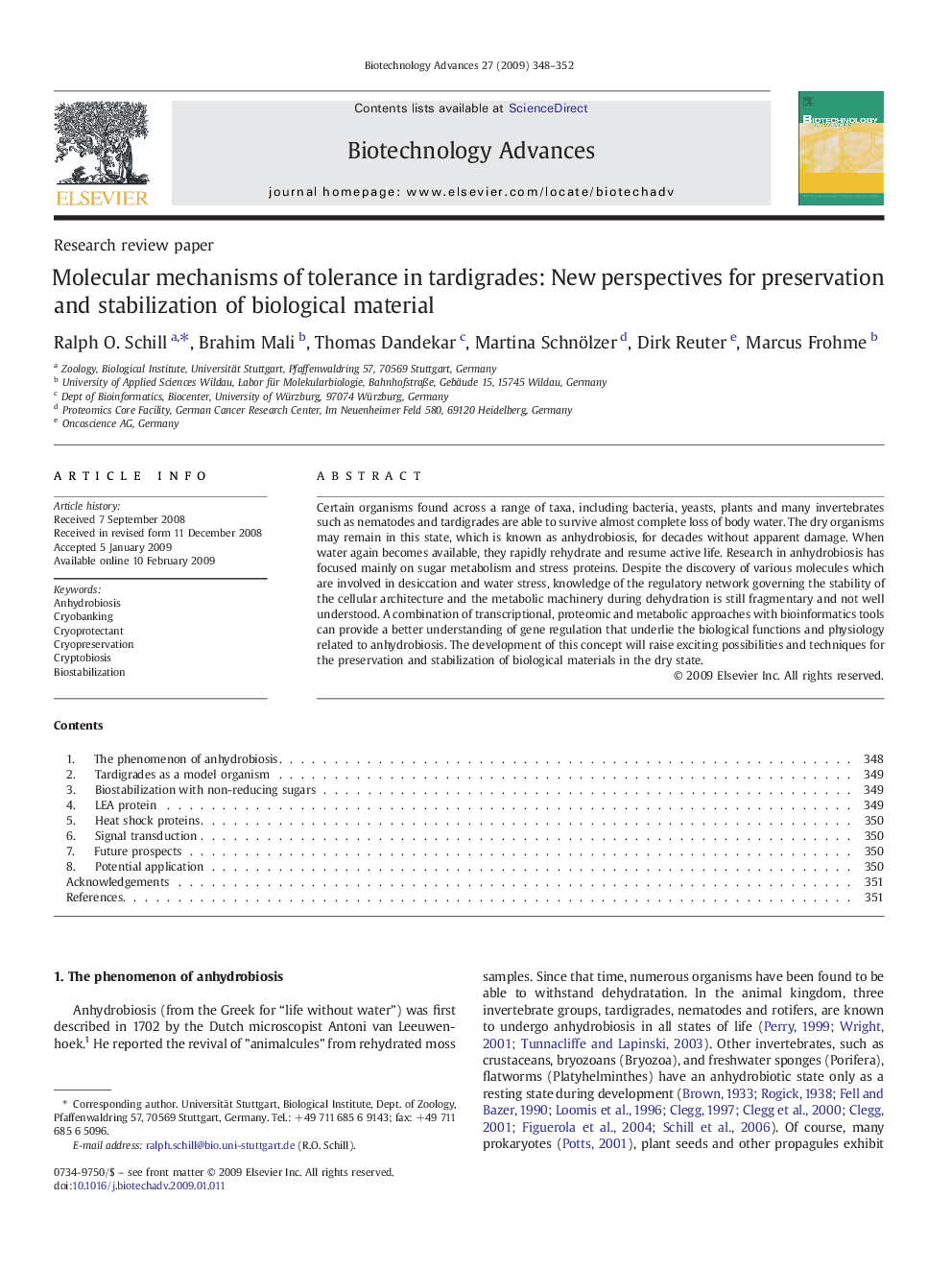| Article ID | Journal | Published Year | Pages | File Type |
|---|---|---|---|---|
| 14498 | Biotechnology Advances | 2009 | 5 Pages |
Certain organisms found across a range of taxa, including bacteria, yeasts, plants and many invertebrates such as nematodes and tardigrades are able to survive almost complete loss of body water. The dry organisms may remain in this state, which is known as anhydrobiosis, for decades without apparent damage. When water again becomes available, they rapidly rehydrate and resume active life. Research in anhydrobiosis has focused mainly on sugar metabolism and stress proteins. Despite the discovery of various molecules which are involved in desiccation and water stress, knowledge of the regulatory network governing the stability of the cellular architecture and the metabolic machinery during dehydration is still fragmentary and not well understood. A combination of transcriptional, proteomic and metabolic approaches with bioinformatics tools can provide a better understanding of gene regulation that underlie the biological functions and physiology related to anhydrobiosis. The development of this concept will raise exciting possibilities and techniques for the preservation and stabilization of biological materials in the dry state.
